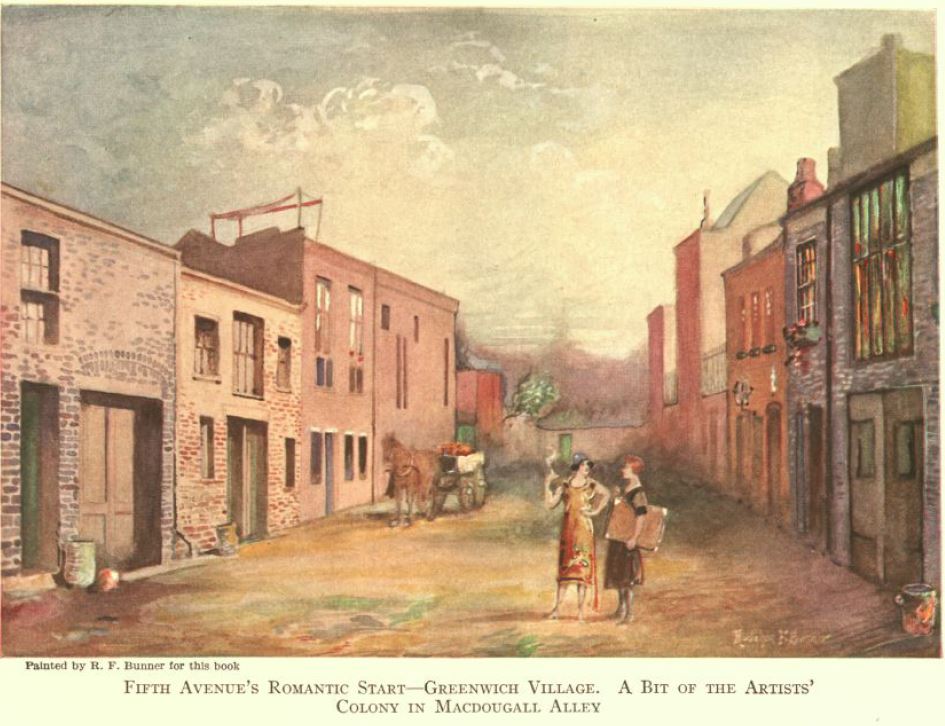As Fifth Avenue Nears 200, A Look Back at How & Where It All Began, and Celebrated 100
Fifth Avenue, one of New York’s defining thoroughfares, stretches from Washington Square Park in Greenwich Village, kicked off (or terminated, depending upon your perspective) by Washington Square Arch. It stretches all the way to West 143rd Street in Harlem, and boasts some of New York’s as well as the country’s most significant architecture, and captures a great deal of the city’s and country’s history.
All that history began in 1824 with the first segment of the Avenue, originally just a country road. Over the course of its lifetime, it transformed into New York’s premiere residential address, the heart of its commercial and shopping district, and a center of its cultural life — whether along Museum Mile or the clubs and cafes of Harlem. It’s played an outsized role in the city’s life, eventually becoming the place where east is separated from west in Manhattan, and where zoning in America began. And all that Fifth Avenue history began in Greenwich Village.

Columbia University’s Digital Library Collection features a document that is a treasure trove of information on the first hundred years of Fifth Avenue’s development, Fifth Avenue Old and New 1824-1924. It was published by the Fifth Avenue Association, an organization that was formed in 1907 by residents, property owners, and proprietors who sought to stave off the possible threat of encroachment by industry to the street, resulting in the aforementioned first zoning regulations in the country. In honor of Fifth Avenue’s centennial in 1924, the association commissioned a history of the Avenue by Henry Collins Brown, then Director of the Museum of the City of New York. It features incredible historic information and fantastic images as well.


As quoted from New York City’s records in 1824:
“The Council reports that the Superior Court has confirmed proceedings of the Commissioners of Estimate and Assessment in the Opening of Fifth Avenue from its commencement at Art Street (today Waverly Place) to 13th Street. Commissioner recommends it to go into effect November first next, and it is Resolved that the Street Commissioner be directed to take necessary measures to carry the opening into effect. Report Approved and Resolution adopted” — Minutes of the Common Council, September 27, 1824
Other sections of the new Avenue were planned to be constructed in consecutive order going north. However, the rocky topography in some places along the route made that goal unattainable, and instead, it was constructed in a disjointed fashion.


Although the first section of Fifth Avenue was laid in 1824, the development of this section south of 14th Street did not start immediately. According to Fifth Avenue Old and New, that would start to change with the transition of what would be Washington Square Park from a potters field to a military parade ground (and later a park) and the opening of NYU in 1837 on the park’s eastern edge. The book goes on to speak about some of the early residents of lower Fifth Avenue and their houses, only a few of which still remain today, including 47 Fifth Avenue (now the Salmagundi Club and an individual New York City landmark) and 10 and 14-16 Fifth Avenue.

47 Fifth Avenue was built in 1852-53 for owner Irad Hawley, president of the Pennsylvania Coal Company. The book gives a more detailed history of 14 Fifth Avenue. It along with its sister buildings at Nos 10, 12 (demolished), and 16 were built in 1848 by Henry Brevoort, Jr. (1782-1848). Future residents included Isaac M. Singer (1811-1875) of Singer Sewing Machines Co., and Civil War hero General Daniel E. Sickles (1819-1914). Our research shows other famous figures at both Nos. 14 and 16 Fifth, including lawyer and philanthropist Charles E. Strong (1824-1897), railroad tycoon George R. Blanchard (1841-1900), inventor Jesse Fellowes Tapley (1824-1910), and screen and stage actress Celeste Holm (1917-2012). To learn more about these historic figures and others who have made their homes at these rare surviving houses, click HERE and HERE. To learn more about our campaign to save these buildings from demolition, click HERE.

Henry Brevoort, Jr., whose family were landowners in the area stretching back to the 1700s, had his own mansion at the northwest corner of 9th Street, built in1834. It was designed in the Greek Revival style, reportedly by Alexander Jackson Davis and Ithiel Town. Brevoort was one of the first to build on Fifth Avenue, and his stately mansion set the tone for future development along Lower Fifth and its surrounding streets.

The book goes on to mention other buildings and institutions on Fifth Avenue below 14th Street, such as Brevoort House, Grosvenor House, Church of the Ascension, First Presbyterian Church, and Grace Church which, while not on Fifth Avenue, has a history closely tied to the avenue. Some of the other notable residents in the area identified were bibliophile and philanthropist James Lenox (1800-1880) at No. 53, lawyer and NYS Senator Lispenard Stewart (1855-1927) at No. 6, and businessman and patron of the arts John Taylor Johnston (1820-1893) at Fifth Avenue and Eighth Street just to name a few. And speaking of arts, Fifth Avenue Old and New also highlights the surrounding art community which has long defined the area and flourished during the mid-19th century, thanks in large part to the support of the area’s wealthy residents.

The book even mentions the burgeoning presence of theaters and playwrights at the beginning of the 20th century, and features this lovely image of the Provincetown Playhouse nearby on MacDougal Street.

While there is a wealth of information in the book on the oldest and original section of Fifth Avenue in Greenwich Village south of 14th Street, this is just a fraction of what the book contains about the avenue for the eager historian (amateur or not) to enjoy. Click HERE and explore further.
